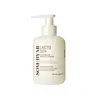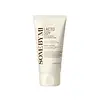What's inside
What's inside
 Key Ingredients
Key Ingredients

 Benefits
Benefits

 Concerns
Concerns

 Ingredients Side-by-side
Ingredients Side-by-side

Water
Skin ConditioningTromethamine
BufferingButylene Glycol
HumectantPolyquaternium-67
Ethylhexyl Palmitate
EmollientHexylene Glycol
EmulsifyingGlucose
HumectantXanthan Gum
EmulsifyingCetyl Ethylhexanoate
EmollientAcrylates/C10-30 Alkyl Acrylate Crosspolymer
Emulsion StabilisingPropanediol
SolventPolyglyceryl-10 Oleate
Skin Conditioning1,2-Hexanediol
Skin ConditioningUrea
BufferingSaccharide Hydrolysate
HumectantHydrogenated Lecithin
EmulsifyingSodium Acetate
BufferingCynanchum Atratum Extract
Skin ConditioningSerine
MaskingGlutamic Acid
HumectantAspartic Acid
MaskingWater, Tromethamine, Butylene Glycol, Polyquaternium-67, Ethylhexyl Palmitate, Hexylene Glycol, Glucose, Xanthan Gum, Cetyl Ethylhexanoate, Acrylates/C10-30 Alkyl Acrylate Crosspolymer, Propanediol, Polyglyceryl-10 Oleate, 1,2-Hexanediol, Urea, Saccharide Hydrolysate, Hydrogenated Lecithin, Sodium Acetate, Cynanchum Atratum Extract, Serine, Glutamic Acid, Aspartic Acid
Water
Skin ConditioningGlycerin
HumectantMyristic Acid
CleansingPotassium Hydroxide
BufferingPalmitic Acid
EmollientStearic Acid
CleansingGlyceryl Stearate Se
EmulsifyingSorbitan Olivate
EmulsifyingLauric Acid
CleansingLactobacillus/Soymilk Ferment Filtrate
Skin ConditioningSodium Methyl Cocoyl Taurate
CleansingCocamidopropyl Betaine
CleansingDipropylene Glycol
HumectantPolyquaternium-7
Hydroxyacetophenone
AntioxidantCaprylyl Glycol
EmollientSodium Chloride
MaskingPropanediol
SolventDisodium EDTA
Butylene Glycol
HumectantHydroxyethylcellulose
Emulsion Stabilising1,2-Hexanediol
Skin ConditioningEucalyptus Globulus Leaf Oil
PerfumingDextrin
AbsorbentTheobroma Cacao Extract
Skin ConditioningPapain
Skin ConditioningGlycine Soja Seed Extract
Skin ConditioningAllantoin
Skin ConditioningSodium Benzoate
MaskingGlycine
BufferingLavandula Angustifolia Oil
MaskingSodium Hyaluronate Crosspolymer
HumectantSerine
MaskingGlutamic Acid
HumectantDipotassium Glycyrrhizate
HumectantAspartic Acid
MaskingLeucine
Skin ConditioningAlanine
MaskingLysine
Skin ConditioningArginine
MaskingTyrosine
MaskingPhenylalanine
MaskingThreonine
Proline
Skin ConditioningValine
MaskingIsoleucine
Skin ConditioningHistidine
HumectantSodium Hyaluronate
HumectantMethionine
Skin ConditioningCysteine
AntioxidantHyaluronic Acid
HumectantHydrolyzed Hyaluronic Acid
HumectantHydroxypropyltrimonium Hyaluronate
Hydrolyzed Sodium Hyaluronate
Skin ConditioningPotassium Hyaluronate
Skin ConditioningMentha Rotundifolia Leaf Extract
TonicPentylene Glycol
Skin ConditioningCamellia Sinensis Leaf Extract
AntimicrobialThymus Vulgaris Leaf Extract
Skin ProtectingSodium Acetylated Hyaluronate
HumectantWater, Glycerin, Myristic Acid, Potassium Hydroxide, Palmitic Acid, Stearic Acid, Glyceryl Stearate Se, Sorbitan Olivate, Lauric Acid, Lactobacillus/Soymilk Ferment Filtrate, Sodium Methyl Cocoyl Taurate, Cocamidopropyl Betaine, Dipropylene Glycol, Polyquaternium-7, Hydroxyacetophenone, Caprylyl Glycol, Sodium Chloride, Propanediol, Disodium EDTA, Butylene Glycol, Hydroxyethylcellulose, 1,2-Hexanediol, Eucalyptus Globulus Leaf Oil, Dextrin, Theobroma Cacao Extract, Papain, Glycine Soja Seed Extract, Allantoin, Sodium Benzoate, Glycine, Lavandula Angustifolia Oil, Sodium Hyaluronate Crosspolymer, Serine, Glutamic Acid, Dipotassium Glycyrrhizate, Aspartic Acid, Leucine, Alanine, Lysine, Arginine, Tyrosine, Phenylalanine, Threonine, Proline, Valine, Isoleucine, Histidine, Sodium Hyaluronate, Methionine, Cysteine, Hyaluronic Acid, Hydrolyzed Hyaluronic Acid, Hydroxypropyltrimonium Hyaluronate, Hydrolyzed Sodium Hyaluronate, Potassium Hyaluronate, Mentha Rotundifolia Leaf Extract, Pentylene Glycol, Camellia Sinensis Leaf Extract, Thymus Vulgaris Leaf Extract, Sodium Acetylated Hyaluronate
Ingredients Explained
These ingredients are found in both products.
Ingredients higher up in an ingredient list are typically present in a larger amount.
1,2-Hexanediol is a synthetic liquid and another multi-functional powerhouse.
It is a:
- Humectant, drawing moisture into the skin
- Emollient, helping to soften skin
- Solvent, dispersing and stabilizing formulas
- Preservative booster, enhancing the antimicrobial activity of other preservatives
Aspartic Acid is an amino acid that our bodies produce naturally. It is an antioxidant.
Our body uses Aspartic Acid to help build collagen and elastin. It also plays a role in hydrating skin.
Butylene Glycol (or BG) is used within cosmetic products for a few different reasons:
Overall, Butylene Glycol is a safe and well-rounded ingredient that works well with other ingredients.
Though this ingredient works well with most skin types, some people with sensitive skin may experience a reaction such as allergic rashes, closed comedones, or itchiness.
Learn more about Butylene GlycolGlutamic Acid is an amino acid that is found in all living organisms. Our bodies use this to help nerve cells in the brain communicate with other cells.
In cosmetics, glutamic acid is a famous humectant. It draws water from the air to your skin, keeping your skin hydrated (like hyaluronic acid).
An in-vitro study from 2024 found glutamic acid to play a role in inhibiting inflammation and thus a potential skin-soothing ingredient.
Other studies show it to be have potential wound healing, skin barrier repair, and hair growth properties.
Glutamic acid has poor solubility in water and other solvents.
Learn more about Glutamic AcidPropanediol is an all-star ingredient. It softens, hydrates, and smooths the skin.
It’s often used to:
Propanediol is not likely to cause sensitivity and considered safe to use. It is derived from corn or petroleum with a clear color and no scent.
Learn more about PropanediolSerine is an amino acid naturally found in our body. Our bodies use amino acids to create protein.
Amino-acids help give keep our skin hydrated. They play an important role in the skin barrier, which keeps the skin plump and firm.
Serine is a non-essential amino acid, meaning we don't need to obtain it from eating foods.
Learn more about SerineWater. It's the most common cosmetic ingredient of all. You'll usually see it at the top of ingredient lists, meaning that it makes up the largest part of the product.
So why is it so popular? Water most often acts as a solvent - this means that it helps dissolve other ingredients into the formulation.
You'll also recognize water as that liquid we all need to stay alive. If you see this, drink a glass of water. Stay hydrated!
Learn more about Water